St. Boniface Museum Louis Riel Exhibit
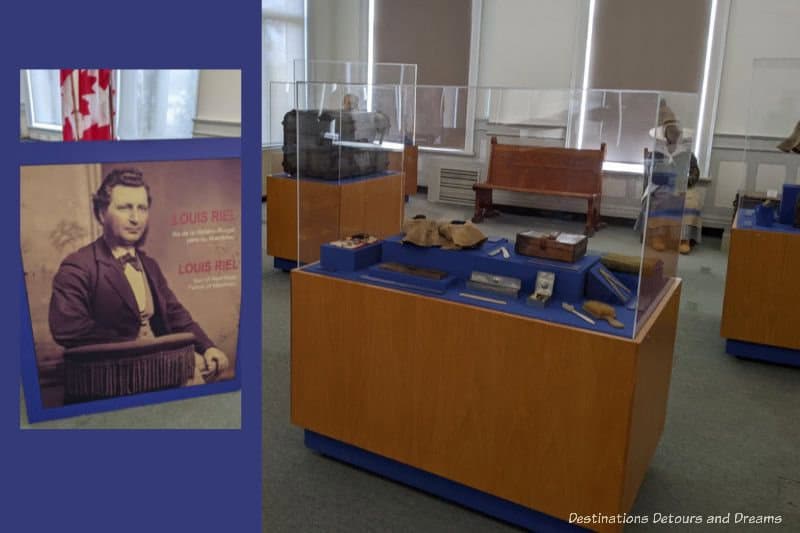
Historic St. Boniface City Hall building in Winnipeg, Manitoba, Canada houses temporary Louis Riel Exhibit and St. Boniface Museum Boutique while the museum building undergoes renovation
While the historic building housing the St. Boniface Museum in Winnipeg, Manitoba, Canada is closed for necessary renovations, the museum has temporarily moved its boutique and a Louis Riel exhibit into another historic building, the former St. Boniface City Hall.
The St. Boniface Museum showcases the heritage of French-Canadian and Métis people in western Canada, the historic contributions of First Nations and religious communities, and boasts the largest collection of Louis Riel artifacts in Canada. You can read my post about it here.
The museum building itself is an artifact. It is the oldest remaining structure in Winnipeg and the largest oak log building in North America. The former Grey Nuns’ convent was built between 1845 and 1851. It once served as the first hospital in Western Canada. At other points in its history, it was a school for boys and girls and a boarding school for girls. Now the building needs some work. The museum is closed while that work is being done and hopes to reopen in 2026.
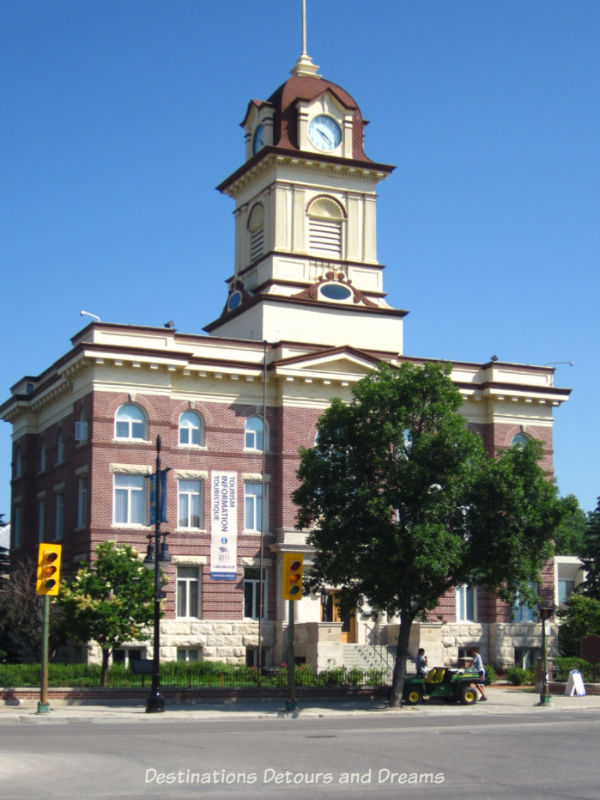
The building housing museum staff, the store, and the Louis Riel exhibit during the renovation is the former St. Boniface City Hall at 219 Provencher Boulevard. St. Boniface, Winnipeg’s French Quarter, was its own city until 1972 when it and ten other municipalities around Winnipeg joined the city to create the new unified City of Winnipeg.
The city hall, designed by Victor W. Horwood, was built in 1905 during a period of rapid growth in St. Boniface. It is a classically-styled three-story, red brick structure with a central domed tower. It was designated a national historic site in 1984.
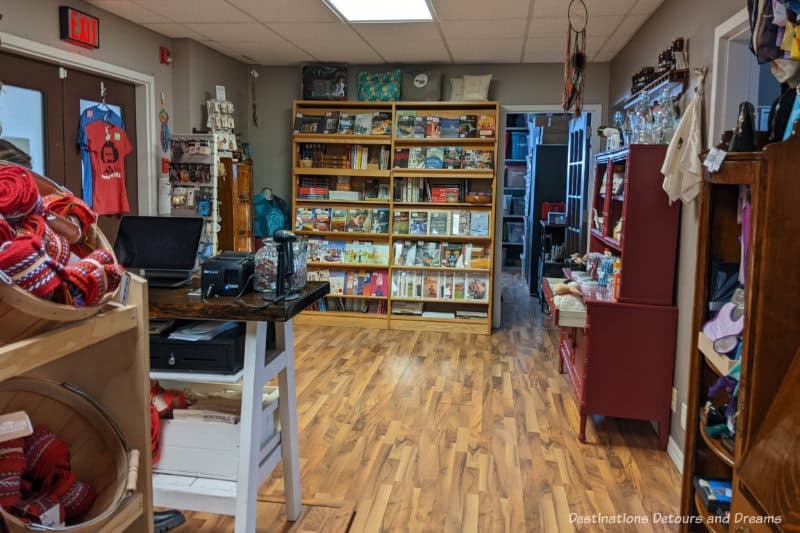
The St. Boniface Museum Boutique is located on the third floor. The welcoming space invites you to browse. There are a wide range of products on the shelves, including books, games and toys, jewelry, artisan products, specialty food and treats, clothing, stationary, wellness products, and more. You’ll find Métis and Indigenous-themed and created items and, of course, the Ceinture Fléchée (the colourful sash/belt used by voyageurs to hold coats closed and as a tumpline line for carrying packs).
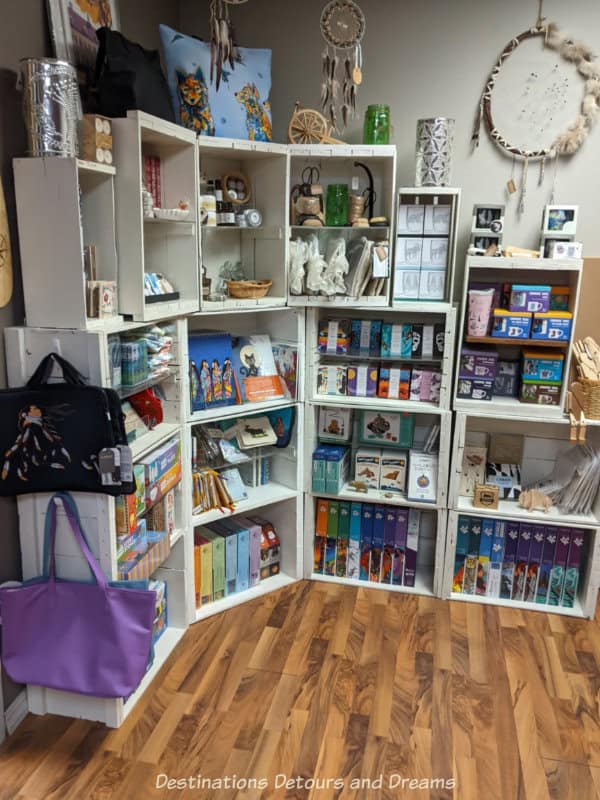
The Louis Riel exhibit is on the second floor. Museum staff in the store will take you to the exhibit. You can browse the exhibit items on your own or take the brief tour offered by staff. I recommend the tour. The person who gave me the tour did an excellent job of presenting the life of Louis Riel, explaining who the Métis people were, and providing more context to the artifacts.
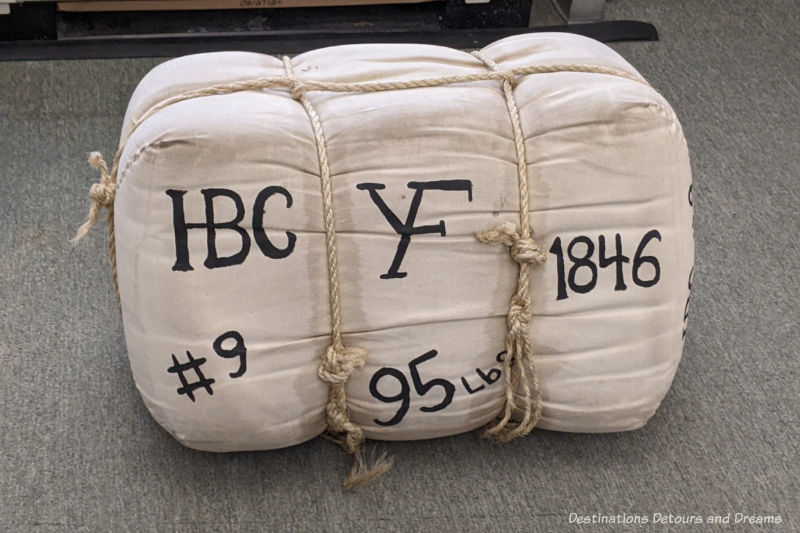
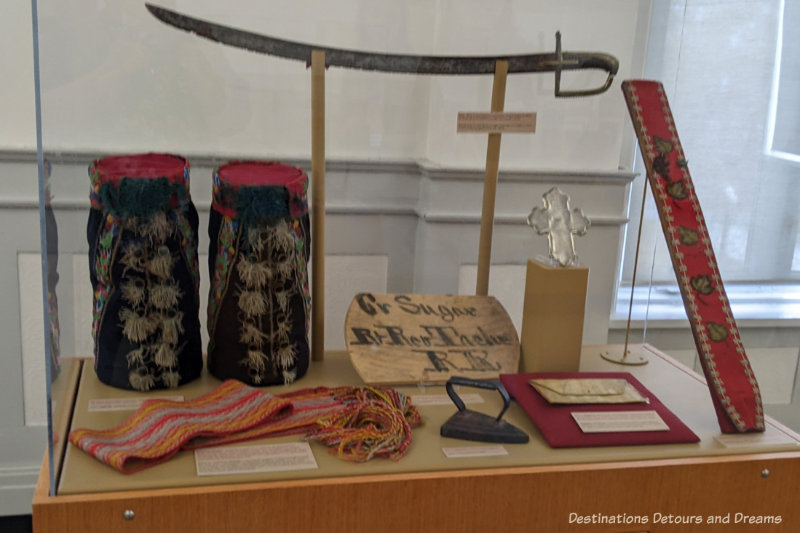
Louis Riel’s mother was the seventh child of Jean-Baptiste Lagimodière and Marie-Anne Gaboury, who came from Quebec in 1806. Lagimodière was a voyageur. His wife Gaboury was unusual in that most wives did not accompany their voyageur husbands out west. Lagimodière settled on the east side of the Red River and became a successful farmer. Louis Riel’s father, Louis Riel Sr., was a farmer, miller, and Métis leader.
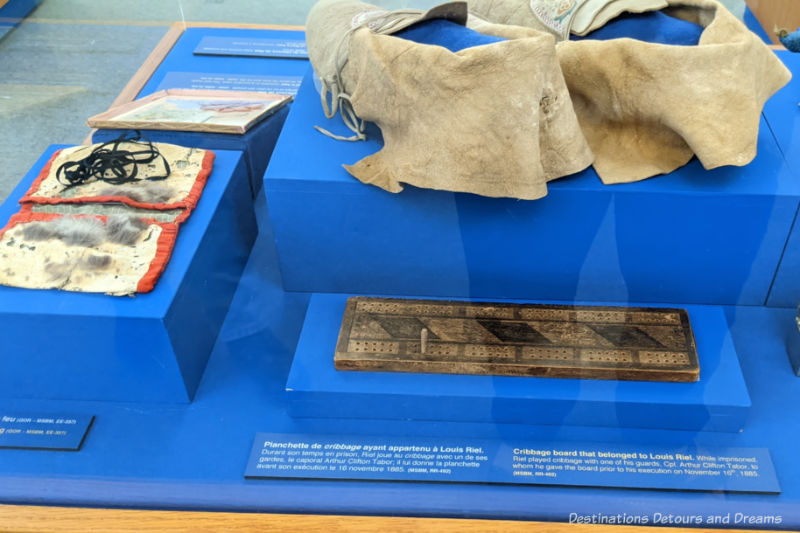
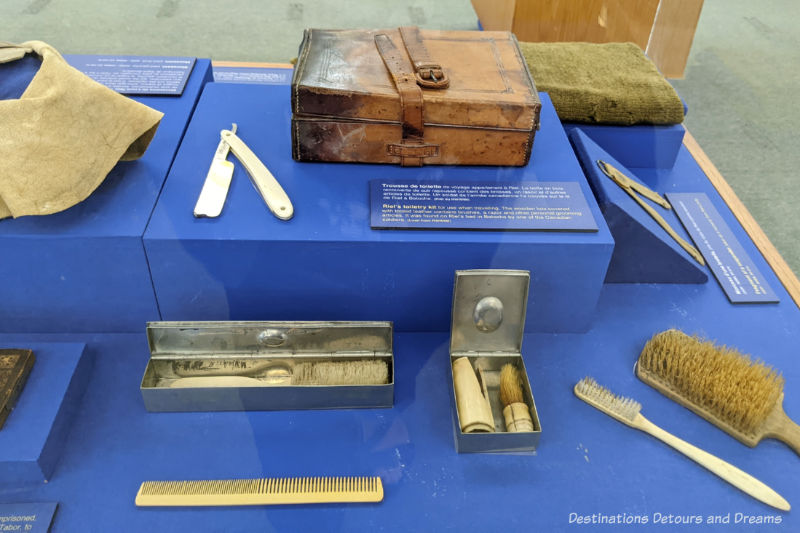
Louis Riel is considered the founder of the Province of Manitoba. The 2023 Louis Riel Act gave him the honorary title of “First Premier of Manitoba.” He was a Métis leader who advocated for Métis land, language, and political rights. When the Canadian government took control of what was then known as Rupert’s Land, they did not negotiate with the Métis people before sending surveyors out to survey the land. The Métis feared losing their land, language, and religion. They formed a provisional government in 1869-1870 with Louis Riel as leader in what became known as the Red River Resistance. Negotiations with the Canadian government led to Manitoba becoming a province. The act that created the province contained protections for Métis rights. However, many of these protections were not completely realized and many Métis moved west.
Louis Riel himself wound up fleeing to the United States because of his role in the trial and execution of an insurgent by the provisional government. In 1884, the Métis in what is now Saskatchewan invited Riel to help them fight for their rights. The federal government sent soldiers in response to Métis petitions. After two months of battle at Batoche, the soldiers overwhelmed Métis fighters. Louis Riel surrendered so that he could continue the fight for Métis rights. Riel was hanged as a traitor in 1885.
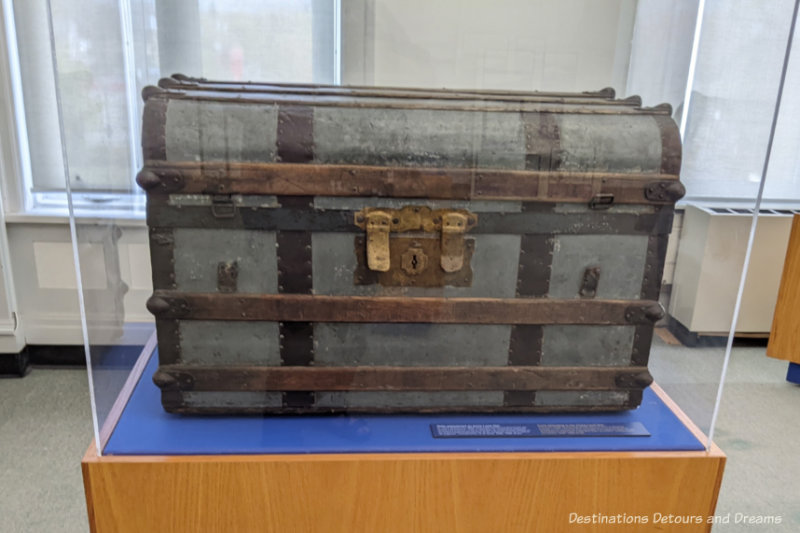
There is a beautiful staircase just inside the door of the old St. Boniface City Hall, but if you walk through the main lobby toward the back you will also find an elevator. The museum store and exhibit were open Monday through Thursday and on Saturday from noon until 4 pm when I visited in October 2024. Check with the museum before visiting as hours may change over time. You should be able to visit the store and the exhibit in under an hour or so, depending on how long you want to browse.
Tourisme Riel has their office on the main floor of the building. They encourage tourism in the Winnipeg area districts of St. Boniface, St. Vital, and St. Norbert, a region described as being the heart of the history of Louis Riel. If you are looking for other things to see and do in the area, you may want to pop in.
The building is also home to the art gallery La Maison des artistes visuels francophones. Be sure to check out their sculpture garden in the green space adjacent to the building.
Never miss a story. Sign up for Destinations Detours and Dreams free monthly e-newsletter and receive behind-the-scenes information and sneak peeks ahead.
PIN IT
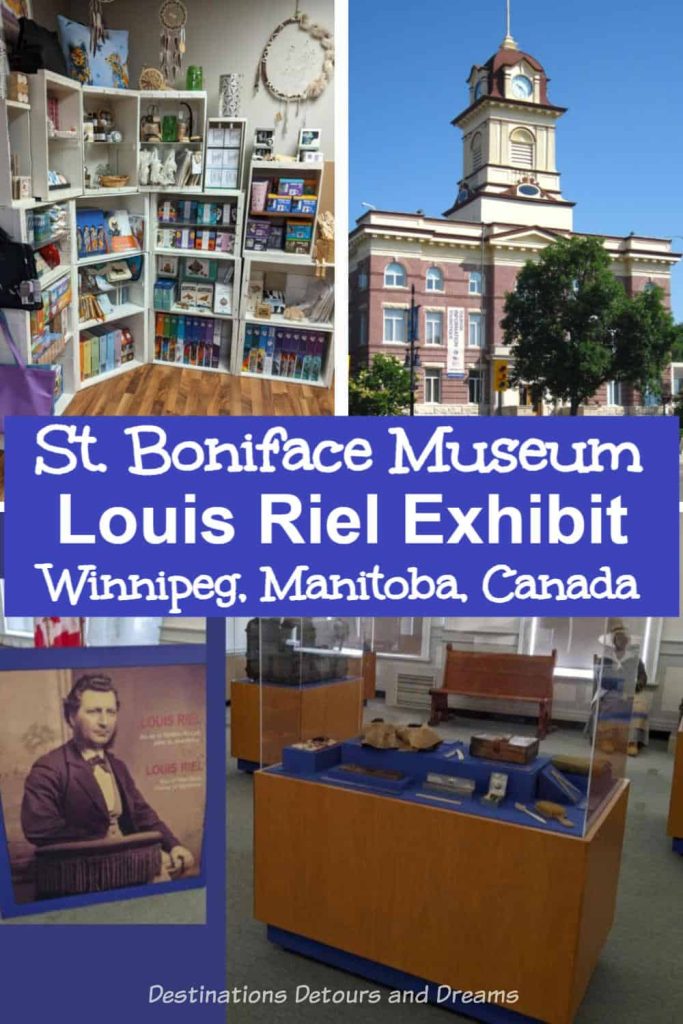


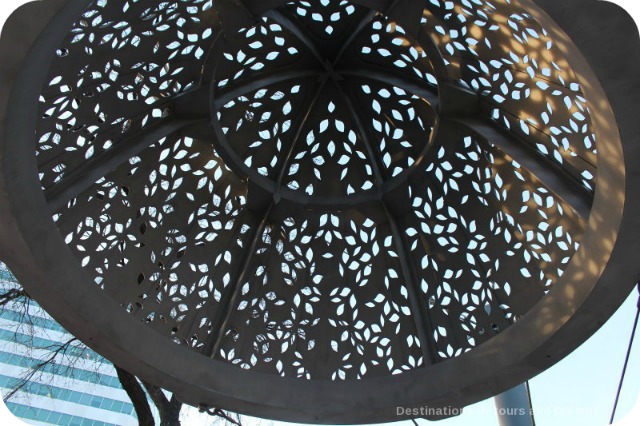

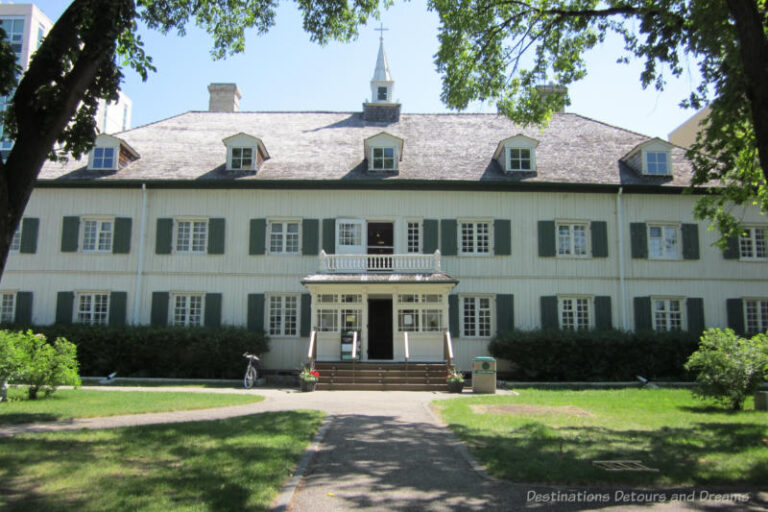
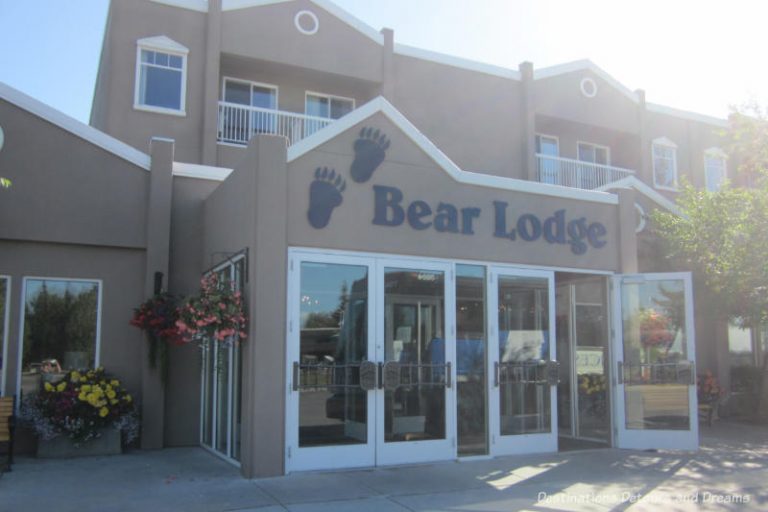
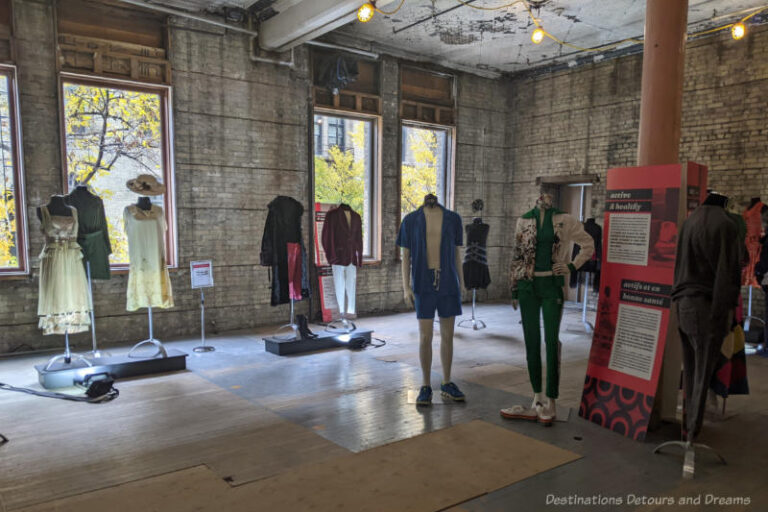
An interesting history. I didn’t know about Louis Riel. Appreciated reading his story.